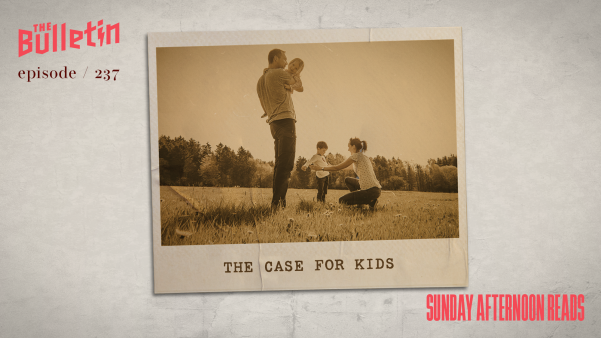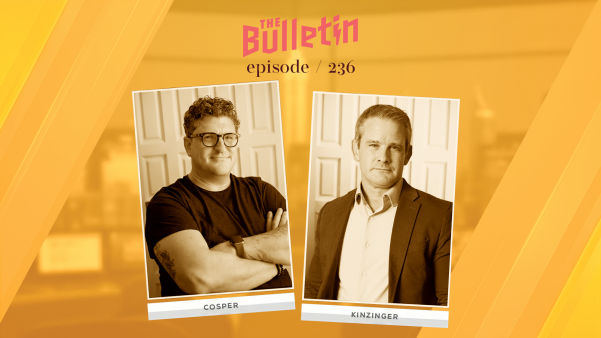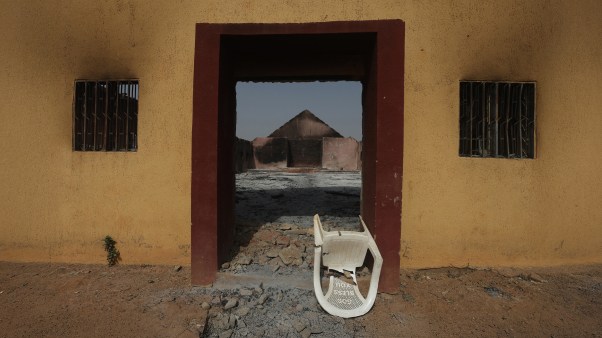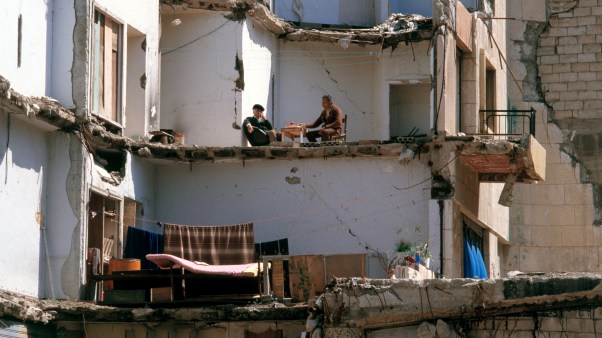Yesterday Kurt Ver Beek and Robert Priest discussed whether it was good to spend more money on short-term missions than on long term missionaries. One justification was that participants in short-term missions gave more money and prayed more for missions after going on a missions trip. But research shows otherwise. Today they discuss other ways such trips fail to change participants or recipients and how to fix that.
Kurt Ver Beek, assistant professor of sociology and third-world development at Calvin College in Grand Rapids, Michigan, recently published the a study which questioned whether short-term missionaries and those served by such missionaries experienced long-term life changes from such missions. We summarized that study and asked Ver Beek to discuss his work further with Robert Priest, associate professor of mission and intercultural studies at Trinity Evangelical Divinity School in Deerfield, Illinois. At the end of the discussion, Ver Beek and Priest will take readers’ questions, which may be submitted via e-mail.
Day One | Day Two | Day Three | Day Four | Questions
Dear Kurt,
As I’ve said, I like your research. But, like any research, it has limitations. House construction in response to hurricane damage represents only one sort of short-term missions (STM) activity. House construction teams may differ from English instruction teams in the nature of the relationships with locals which develop. Those who respond to an ongoing catastrophe (such as HIV in South Africa) might have different levels of sustained commitment than those responding to a temporary crisis (such as Hurricane Mitch). Not only are there different sorts of STM, there are different ways in which people are prepared and guided in carrying out STM activities. And STM organizers and participants hope for a wide divergence of outcomes—only some of which are addressed in your research. Your research provides a good beginning, but more needs to be done. Such research, as we’ve both noted, must be oriented towards identifying patterns that foster long-term results.
STM provides a fertile setting for Christians to reflect on such things as witness, service, community, sacrifice, spirituality, poverty, materialism, suffering, hedonism, self-denial, justice, racism, ethnocentrism, inter-ethnic relations, globalization, stewardship, and vocation. The context is valuable, even if STM leaders do not foster these reflections among participants.
In research with Ph.D. students at Trinity, I’ve been impressed that while STM may not always or automatically produce desired results, the right sorts of STM, carried out in the right sorts of ways, and accompanied by the right sorts of reflections, have potential for good. We discovered, for example, that M.Div. students who had done STM abroad were just as ethnocentric as those who had never gone (according to a validated measure of ethnocentrism). That is, STM is as likely to increase ethnocentrism as to decrease it. But when the STM experience included culture-learning exercises, then the participants exemplified less ethnocentrism. The fact of STM may be less important to outcomes than the manner of STM.
Terry Dischinger and I administered a pre-test/post-test questionnaire to 169 high school students serving in the slums of Tijuana, Mexico, in the context of a high-quality short-term program. Among these students there was a significant drop in ethnocentrism and a major shift upwards on a measure of “trust of Mexicans.” Kurt, you will naturally caution us that these may be temporary changes. To use your vivid image, if one bends a sapling for two weeks, then releases it, one can measure a change in its position. But three months later it may be back to where it started. That is, when these high school students return to the settings that originally shaped their ethnocentrism and negative attitudes towards Mexicans, they may eventually revert to the original pattern.
Even so, I would not conclude that such trips are worthless. Rather, I would still be impressed with the dramatic changes that temporarily occurred, and I would focus attention on the activities back home that churches must engage in to ensure that dramatic positive changes are sustained. A church that sends youth to Mexico, while ignoring Mexican immigrants all around, may be undercutting the very likelihood of sustained positive results in the lives of its youth. A church, on the other hand, which fosters the sorts of interethnic service and witness at home that it practices abroad may find that desired results in the lives of youth are more likely to be sustained over the course of time.
Yes, there is often naïve and unfounded optimism about the long-term results of STM. But in the midst of this heterogeneous, entrepreneurial grass-roots movement are many strategic ways of doing short-term mission, which, I suspect, bear lasting fruit. It is these that need to receive our attention. Back to you, Kurt.
All the best,
Bob
* * *
Dear Robert,
You make lots of good points. This is fun, and I will do my best to respond.
You are very right to point out that my research so far looked only at one type of short-term missions in one country. That’s why I am now carrying out similar research in Haiti, Kenya, Thailand, and Honduras with four different types of groups. It is also why I have spent quite a bit of time the last few months looking at other people’s research to see if my findings are exceptional or the norm. What I have found regarding North American participants is somewhat discouraging. Your two research projects, with seminary and high school students, my study, the Purvis study (the one I mentioned in my last note) and nearly every study which has applied pre- and post-trip tests to STM participants (see the STM bibliography on my web page) has found that there is little or no lasting change in areas like spiritual maturity, cross-cultural awareness, ethnocentrism, and other hoped-for results of STM.
But I think we already know this about ourselves; it’s common sense. We get very excited about something and sincerely want to make big changes but find it hard to follow through in the long term. It would actually be surprising if a one-week STM experience were any different.
The encouraging thing is that we know how to make these commitments last. It’s not about how good the orientation is before they go, and it’s only somewhat about the experience itself. The key to long-lasting change is having structures in place to help us stay motivated and excited about our goals. What we need to keep us on track in meeting our goals—to do devotions daily or exercise four times a week—is accountability and encouragement. Monthly meetings with our groups after returning to the U.S. newsletters about the progress and needs of the people we visited, Bible studies on the country or theme of our trip, are just a few of the ideas that can translate a one-week experience into life-lasting changes in prayer, giving, and lifestyle. Sadly, very few STM experiences are currently emphasizing this sort of follow up. This is where I believe we should begin experimenting and see how STM participants are changed.
Finally, I think it’s high time we begin discussing the effects of STM on the other participants—the communities the trips are meant to serve, help, and evangelize. Out of the 40-some studies that we found published before 2004, only one interviewed “receivers” of STM. Before beginning this research, I hypothesized that STM were often disempowering to the communities that received them. I thought the communities would feel like they were not as smart, capable, or hard working as the North Americans, and they would end up discouraged.
However, in our interviews with over 80 families in Honduras—40 of whom had their house built by a STM group and 40 whose house had been built by a Christian organization—we could see no lasting negative effects on the families whose houses were built by a group; but no lasting positive effects either. All of the families were overjoyed with their houses, they thanked God for this incredible blessing, and many of them in both groups felt like the process of losing and then receiving a house had brought them closer to God. But the families whose homes were built by groups were no worse or better off than the others (see my study for more details). Once again, I think this reinforces my growing hunch that STMs by themselves do not produce lasting change in North Americans, Hondurans, or Kenyans. I think they need to be part of a larger framework—especially after the experience—that can translate a one-week high into lasting changes for all involved.
Once again I have hit my space limit with lots more to say but I will pass the baton back—what do you think, Robert, about the effects of most current STM trips on the “receivers” and how can we make them better?
Looking forward to hearing from you,
Kurt
Copyright © 2005 Christianity Today. Click for reprint information.
Related Elsewhere:
See our earlier coverage of Ver Beek’s work, “Study Questions Whether Short-Term Missions Make a Difference.”
Ver Beek’s study, along with a PowerPoint synopsis and bibliography, are available at his Calvin College site.
Ver Beek presented his paper at the 2005 missiology conference at Trinity Evangelical Divinity School in Deerfield, Illinois.
Earlier parts in this series include:
Who Gets ‘Socially Rich’ from Short-Term Missions? | How communities feel about themselves after receiving a group may be more important than the number of latrines dug or homes built. (July 8, 2005)
Mission Trips or Exotic Youth Outings? | Not everything in your church’s missions budget may be about missions. (July 7, 2005)
Do Short-term Missions Change Anyone? | Or do one week’s good intentions fall flat without a concerted effort to follow through? (July 6, 2005)
Are Short-Term Missions Good Stewardship? | More than 2 million teens go on such trips ever year, and giving may exceed that given to long-term missionaries. But is short-term ministry built to last? (July 5, 2005)
Study Questions Whether Short-Term Missions Make a Difference | Missionaries don’t keep giving after they return; hosts prefer money to guests, Calvin sociologist finds. (June 20, 2005)
STEM Int’l has more information on short-term missions, including missions opportunities. The ministry will launch Mission Maker Magazine in late September.
Peterson’s “Maximum Impact Short Term Missions,” “Is Short-Term Mission Really Worth the Time and Money?” and “Can Short-Term Mission Really Create Long-Term Missionaries” can be purchased at the STEM International site.
Earlier Christianity Today coverage of short-term missions includes:
Agencies Announce Short-Term Missions Standards | Similar codes have been established in Great Britain and Canada. (Sep. 30, 2003)
McMissions | Short-termers have their place, but not at the expense of career missionaries. A Christianity Today editorial by Miriam Adeney (Nov. 11, 1996)
See also Marshall Allen’s October 2001 article for FaithWorks magazine, “Mission tourism?“
This American Life, a public radio show, spent a week with the youth group from Covenant Presbyterian Church in Chicago as they took a missions trip to West Virginia.








